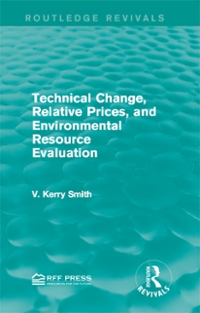mm Q: Targeting Health Subsidies Pascaline Dupes, Vivian Hoffmann, Michael Kremer, and Alix Peterson Zwane did a Randommd Controlled Trial (RCT) on ways of delivering chlorine tablets to treat water. They designed this experiment to address two issues that some public health systems have faced. First, they want to test whether those who need the product do receive it under each delivery mechanism: if there are people who aren't receiving it who should, this is called overexclusion. Secondly, they want to test if people who receive the tablets waste them by not using them correctly, which is called overinclusion. Both of 5' these issues could happen under the same delivery mechanism. '- These issues of'targeting" are also crucial in distributing other health goods, such as insecticide-treated i l}! bedncts which help prevent malaria. You have been asked by a policymaker in Kenya to evaluate the 9' best way to distribute bednets, accounting for the tradeoffs between overexclusion and overinclusion. , y should the policymaker care if there is overexclusion in the provision ;' of treated bednets (that is, if those who need hednets do not receive them)? i (b) In two sentences or less, why should they care if there is overinclusion (that is, if recipients don't use them correctly)? Having read this paper in your development economics class, you decide to run a similar experiment which compares (i) partially subsidized (50% subsidy) bednets available for immediate purchase at enrollment (\"Cost Sharing"), (ii) totally free bednets available immediately at enrollment (\"Free Delivery"), and (iii) vouchers for free bednets which the household can redeem at a local shop (\"Vouchers\"). 900 households from the target population were randomly assigned to one of the three experimental conditions (300 per treatment arm). You then visit households on unannounced days to see whether households are correctly using their treated bednets. The following table reports take-up and bednets usage at the later visit by treatment arm: Correct Bednet Usa e H____..,..% _ ill-\" . .nltsaLmt. Purchased bednet .173 _..,mt\\m9_emsi_heaqtm ...-,.ln,.________.=29___ __r w. Redeemed voacher for ' .862 (e) Calculate the rate of overinclusion and overexclusion for each treatment arm, and write them in the table below. To calculate the rate of overinclusion, nd the share of people who received a bednet who did not use it correctly (takeup usage rates). To calculate the rate of overexclusion, use the rate of correct bednet usage among those in the free delivery arm as the comparison point that is, what share of people who would have used the bednet correctly if given it for free are not using it under this treatment arm (subtract the usage rate from the rate under free delivery)? (Use three decimal spacasfbr Display. No need to convert decimals to percents.) p.99 vahased bednet Acceted bednet Vouchers Redeemed voucher for .862 .753 bednet (c) Calculate the rate of overinclusion and overexclusion for each treatment arm, and write them in the table below. To calculate the rate of overinclusion, nd the share of people who received a bednet who did not use it correctly (takeup usage rates). To calculate the rate of overexclusiou, use the rate of I correct bednet usage among those in the free delivery arm as the comparison point that is, what share of people who would have used the bednet correctly if given it for free are not using it under this treatment arm (subtract the usage rate from the rate under free delivery)? (Use three decimal spaces jbr F Display. No need to convert decimals to percents.) 1' 5 Treatment Arm 1 Overinclusion Overexclusion Cost Sharing Free Delivery i Vouchers Given the results of your study, the policymaker is trying to decide whether to provide bednets via free delivery or vouchers to their population of 1000 households. They have read Dupes et 31's paper and so want to use the inequality she provides. That is, they will prefer free delivery to vouchers if the following equation holds: Page 7 of 7 - ZOOM Let f denote free delivery of bednets while v denotes vouchers. V * ( N f - NV) > C * (T f - Tv) The policymaker has told you that their valuation of each additional household using bednets correctly is $50 (V = 50). Furthermore, the cost of each bednet, regardless of distribution mechanism, is $7 (C = 7). (d) Given your findings about the number of households using bednets correctly under each policy (N and Ny), as well as the number of bednets distributed under each policy (T and Tv), should you recommend a policy of free bednet distribution or vouchers? How does this compare to the recommendation made by Pascaline Dupas and her coauthors about chlorine tablets? Please show your work on the calculations and briefly explain. MacBook Air R G










